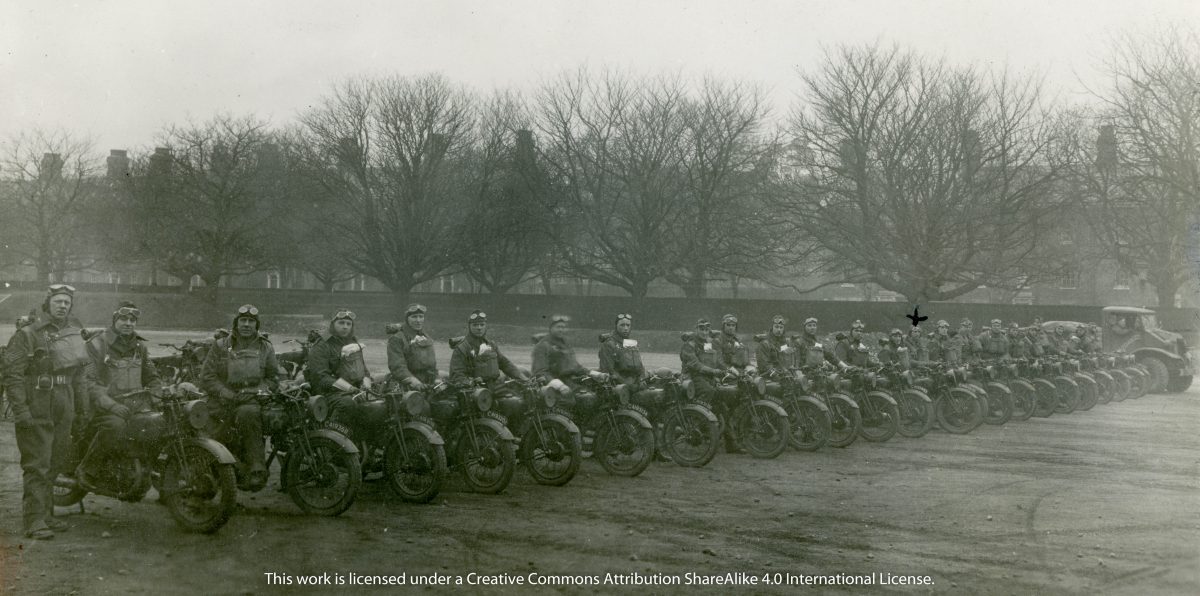
Essex and Kent Scottish Regiment history highlights: The regiment traces its lineage back to 1740 when the region [Ontario, Canada] was part of the French empire, although there were several breaks until 1885, when the immediate predecessor of the current regiment begins. Here are some of the highlights:
Timeline
1885
The Essex Battalion of Infantry, headquartered in Windsor [Ontario, Canada], is formed.
1887
The name is changed to 21st Battalion, Essex Fusiliers.
1900
The new name is 21st Regiment, Essex Fusiliers, which supplies officers and men for the Canadian volunteer force during the Boer War
1914
With the outbreak of the First World War Fusiliers’ commanding officer Lt.-Col. E.S. Wigle (pronounced: “Waggle”) organizes the 18th Battalion, Canadian Expeditionary Force. Later, the 99th and 241st Battalions are also recruited through the Fusiliers. The three battalions win 18 battle honours by the time the war ends in 1918.
1919
Battalions disband and Essex Fusiliers reform.
1927
Regiment adopts Highland dress and is renamed the Essex Scottish (Highlanders) under the command of Lt.-Col. Alan Prince, great-grandson of Col. John Prince. The official tartan is the McGregor, named for Lt.-Col. Walter McGregor, whose family founded Ford of Canada and who supplied the funds for the new uniforms. The regimental crest has a red shield with three white sea axes — symbol of Essex County, England, the motto Semper Paratus (Always Ready) and a lion’s head at the top. The Highland Laddie is the regimental quick march.


1939
Regiment mobilizes on Sept. 3, a week before Canada declares war on Germany, with many volunteers coming from the U.S. Preliminary training begins.
1940
The Essex Scottish regiment leaves from Halifax for England on July 23 to become part of the fourth brigade of the Second Canadian Infantry Division. Two years of training and exercises begin.
1942
First attempt to assault Dieppe (Operation Rutter) by 5,000 members of the Second Division and supporting forces fails due to bad weather. Troops leave embarkation ships to return to base on July 12.
1942
Operation Jubilee gets underway Aug. 18. Landing at Dieppe is Aug. 19. The regiment, along with the rest of the battalions taking part, is cut to pieces.
1942
Following the raid, the regiment is rebuilt and takes part in more training for the next two years.
1944
The Second Division returns to the continent a month after the D-Day landings, seeing action at places like Ifs, Verrieres and Falaise. Casualties are again high.
1944
The Second Division liberates Dieppe without a fight on Sept. 1. A triumphant march is held, and the soldiers place flowers on the graves of those killed in the raid two years earlier.
1944-45
The regiment is involved in battle after battle in Belgium, Holland and Germany, with a Victoria Cross awarded to Maj. Fred Tilston for actions in the Hochwald Forest fighting on March 1.
1945
The war ends with the Essex Scottish holding part of Oldenburg in Germany. The regiment has the highest casualty figures for any Canadian battalion in the war – 2,510 – and adds 18 more battle honours.
1954
The Essex Scottish and the Kent regiment are amalgamated, adopting the current name. A Hundred Pipers becomes tune of the Chatham-based battalion.

1965
Canadian Forces headquarters orders 1st and 2nd battalions amalgamated. There are now two companies in Windsor and one in Chatham.

